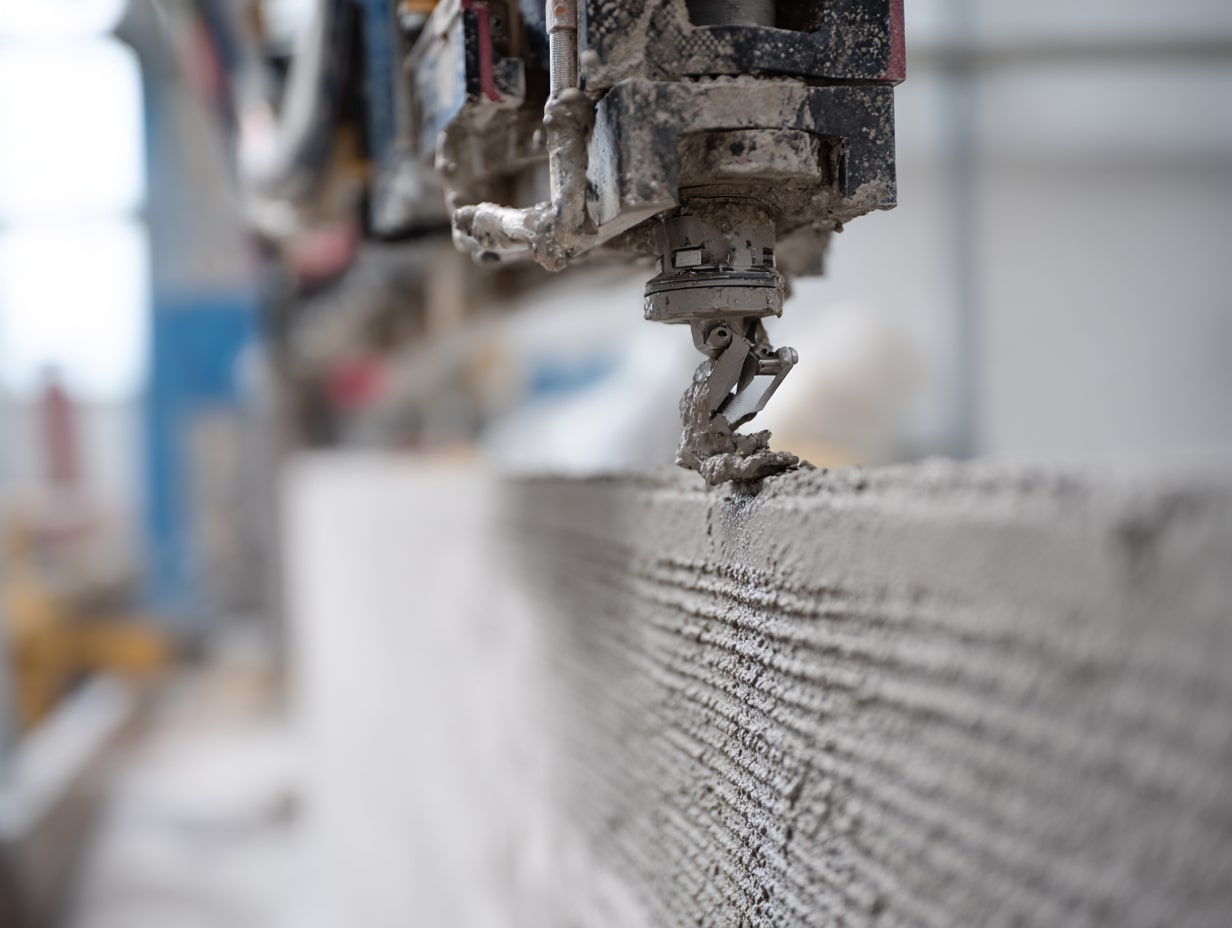- Home
- Articles
- Architectural Portfolio
- Architectral Presentation
- Inspirational Stories
- Architecture News
- Visualization
- BIM Industry
- Facade Design
- Parametric Design
- Career
- Landscape Architecture
- Construction
- Artificial Intelligence
- Sketching
- Design Softwares
- Diagrams
- Writing
- Architectural Tips
- Sustainability
- Courses
- Concept
- Technology
- History & Heritage
- Future of Architecture
- Guides & How-To
- Art & Culture
- Projects
- Interior Design
- Competitions
- Jobs
- Store
- Tools
- More
- Home
- Articles
- Architectural Portfolio
- Architectral Presentation
- Inspirational Stories
- Architecture News
- Visualization
- BIM Industry
- Facade Design
- Parametric Design
- Career
- Landscape Architecture
- Construction
- Artificial Intelligence
- Sketching
- Design Softwares
- Diagrams
- Writing
- Architectural Tips
- Sustainability
- Courses
- Concept
- Technology
- History & Heritage
- Future of Architecture
- Guides & How-To
- Art & Culture
- Projects
- Interior Design
- Competitions
- Jobs
- Store
- Tools
- More
Zero-Waste Roofing: Designing for Circular Economy Principles in Architecture

Table of Contents
ToggleIntroduction
The construction industry generates nearly 40% of all waste in developed countries. Roofing materials alone account for about 8-10% of construction debris sent to landfills each year. These numbers paint a troubling picture for our environment and resource management.
Zero-waste roofing has emerged as a practical solution to this growing problem. This approach transforms how we think about roof design, installation, and end-of-life management. The concept connects directly to circular economy principles, where materials maintain their value and utility throughout their lifecycle.
Most traditional roofing systems follow a linear path – extract resources, manufacture products, install them, and eventually discard them. Zero-waste roofing breaks this wasteful cycle. It minimizes environmental impact through thoughtful design choices and resource-efficient practices. But how exactly does this work in practice? Let’s explore the details.
Understanding Zero-Waste Roofing and the Circular Economy
What is Zero-Waste Roofing?
Zero-waste roofing aims to eliminate waste during the entire roof lifecycle. This approach focuses on three key principles: reduce material use, reuse components when possible, and recycle materials at end-of-life. The goal isn’t just to manage waste better – it’s to prevent waste creation from the start.
Architects and commercial roofing contractors who embrace zero-waste principles design roofs with their entire lifecycle in mind. They select materials that can be easily separated, reused, or recycled. They also consider how installation methods affect future repair, replacement, and eventual deconstruction. This holistic view transforms roofing from a disposable product to a renewable resource.

The Circular Economy in Architecture
The circular economy replaces the traditional “take-make-dispose” model with a regenerative approach. Materials and products remain in use through multiple cycles, preserving their value and reducing environmental impact. This concept applies perfectly to roofing systems, which traditionally consume large amounts of resources.
Circular design principles change how we approach every aspect of roofing:
- Materials selection prioritizes recycled content and recyclability
- Installation methods focus on reversible connections rather than permanent adhesives
- Maintenance extends useful life through repair rather than replacement
- End-of-life planning ensures materials return to production cycles
This shift doesn’t just benefit the environment. It also creates economic opportunities and reduces long-term costs for building owners.
Key Strategies for Zero-Waste Roofing Design
Using Recycled and Recyclable Roofing Materials
Metal roofing stands out as a circular economy superstar. These systems contain up to 95% recycled content and remain 100% recyclable at end-of-life. Steel and aluminum roofing can be recycled indefinitely without loss of quality. This makes metal an excellent choice for zero-waste building projects.
Recycled shingles offer another path toward circularity. Manufacturers now produce asphalt and composite shingles using reclaimed materials from post-consumer waste. These products reduce virgin material consumption while maintaining performance standards. The recycled content varies between 5-95% depending on the specific product.
Rubber roofing derived from recycled tires provides durability and waste reduction. These EPDM systems divert tires from landfills while creating weather-resistant roofing membranes. One typical rubber roof can use material from over 300 recycled tires. The rubber remains recyclable at end-of-life, continuing its circular journey.
Modular and Prefabricated Roofing Systems
Factory-made roofing components significantly reduce waste. Precision cutting and controlled manufacturing processes eliminate the material waste common in on-site fabrication. These systems arrive ready to install, reducing construction time and minimizing scrap.
Modular roofing offers several advantages for zero-waste goals:
- Components can be removed and replaced individually when damaged
- Standardized sizing allows for easy reconfiguration or expansion
- Units can be disassembled and reused on other buildings
- Factory production creates opportunities for closed-loop material recycling
The modular approach turns roofing from a permanent fixture into a flexible system that adapts to changing needs.
Designing for Reuse and Repurposing
Deconstruction-friendly design makes a huge difference in material recovery. Traditional roofing relies heavily on adhesives, making separation of materials difficult or impossible. Zero-waste roofing uses mechanical fasteners and compatible material layers that can be easily separated at end-of-life.
Green roofing systems contribute to regenerative architecture in multiple ways. They extend roof lifespan by protecting waterproofing membranes. The growing medium can be reused in landscaping projects. Plant materials can be composted to create new growing media. These living roofs transform what was once just a protective barrier into a regenerative ecosystem.
Energy-Efficient and Smart Roofing Systems
Solar roofing integration reduces waste through multifunctionality. These systems generate clean energy while providing weather protection. The dual purpose maximizes resource efficiency. Most solar roofing components remain recyclable, with manufacturers increasingly offering take-back programs for end-of-life panels.
Cool roofing technologies extend roof lifespan while reducing energy consumption. Reflective surfaces minimize thermal cycling and UV damage, two major factors in premature roof failure. Less frequent replacement means less waste generation over a building’s lifetime. These systems also reduce cooling loads, decreasing overall energy consumption.
The Environmental and Economic Benefits of Zero-Waste Roofing
Reducing Construction Waste
Zero-waste roofing helps projects achieve green building certifications. LEED, BREEAM, and WELL all award points for waste reduction, recycled content, and material efficiency. These certifications increase property value while demonstrating environmental commitment.
The impact on landfill diversion proves substantial. One commercial re-roofing project can generate up to 10 tons of waste. Zero-waste approaches can divert 80-95% of this material from landfills. This reduction directly lowers the carbon footprint associated with waste transport and decomposition.
Cost Savings Through Resource Efficiency
Lower material costs often result from using recycled products. Many recycled roofing materials cost 10-15% less than their virgin counterparts. The savings increase further when considering reduced disposal costs and potential tax incentives for green building practices.
Durable, long-lasting roofing systems deliver the best return on investment. Zero-waste roofing typically lasts 25-50% longer than conventional alternatives. This extended lifespan spreads the initial cost over more years, reducing the annualized expense. Better durability also minimizes maintenance and repair costs throughout the roof’s life.
Enhancing Building Lifespan and Adaptability
Roofs designed for easy upgrade offer significant advantages. Modular systems allow for partial replacement when needed, rather than complete tear-offs. This approach extends the useful life of the entire roofing system while reducing waste and disruption.
The long-term benefits of circular roofing systems become clear when considering total lifecycle costs. Traditional roofing appears cheaper initially but costs more over time due to earlier replacement needs and disposal fees. Zero-waste systems may have higher upfront costs but deliver better value through longevity and adaptability.
Challenges and Future Trends in Zero-Waste Roofing
Overcoming Material Availability and Industry Adoption Barriers
Limited availability of fully circular materials remains a challenge. The roofing industry still relies heavily on composite materials that resist recycling. This situation improves as manufacturers develop new products and processes, but progress requires continued investment and innovation.

Industry adoption faces resistance due to established practices. Many contractors hesitate to adopt new methods without proven track records. Education and demonstration projects play crucial roles in overcoming this barrier. As more successful zero-waste projects emerge, industry confidence will grow.
Advancements in Biodegradable and Regenerative Roofing Materials
Bio-based materials show promise for truly regenerative roofing. Mycelium (fungal root structures) can be grown into insulation and even structural components. These materials require minimal processing and return safely to the environment at end-of-life.
Hempcrete and other plant-based composites offer another path forward. These materials sequester carbon during growth and provide excellent insulation properties. Their natural composition allows for composting at end-of-life, completing a truly circular lifecycle.
Legislation and Green Building Standards Pushing Circular Economy Adoption
Government regulations increasingly promote zero-waste construction. Several European countries now require minimum recycled content in building materials. Similar measures appear in North American jurisdictions, driving market demand for circular products.
Green building standards continue to evolve toward stricter waste reduction requirements. The latest versions of LEED and BREEAM place greater emphasis on circularity and waste prevention. These standards influence design decisions and material selection across the industry.
Conclusion
Zero-waste roofing represents a fundamental shift in how we approach building design. By embracing circular economy principles, architects and builders can dramatically reduce environmental impact while creating better-performing, longer-lasting buildings.
The benefits extend beyond environmental considerations. Zero-waste roofing delivers economic advantages through resource efficiency, extended lifespan, and reduced disposal costs. It also creates opportunities for innovation and differentiation in a competitive market.
Are you planning a roofing project? Consider partnering with experts who understand zero-waste principles. Their guidance can help you select appropriate materials, design for circularity, and implement best practices throughout the project. Together, we can transform roofing from a source of waste into a model of sustainability.
illustrarch is your daily dose of architecture. Leading community designed for all lovers of illustration and #drawing.
Submit your architectural projects
Follow these steps for submission your project. Submission FormLatest Posts
3D Printed Homes: Time, Cost, and What to Expect
3D printed homes explained: realistic timelines (24–72h walls, 8–16 weeks total), true...
How a Contact Centre Boosts Trust in Your Building Business
In construction, trust is the glue that holds projects together. Clients need...
How Real Time Parcel Geolocation Is Redefining Last Mile Efficiency for Modern Businesses
Last mile delivery has become the most critical point in the customer...
How Can Small Spaces Stay Stylish and Relaxing?
In today’s fast-paced urban lifestyle, small living spaces are becoming increasingly common....












Leave a comment